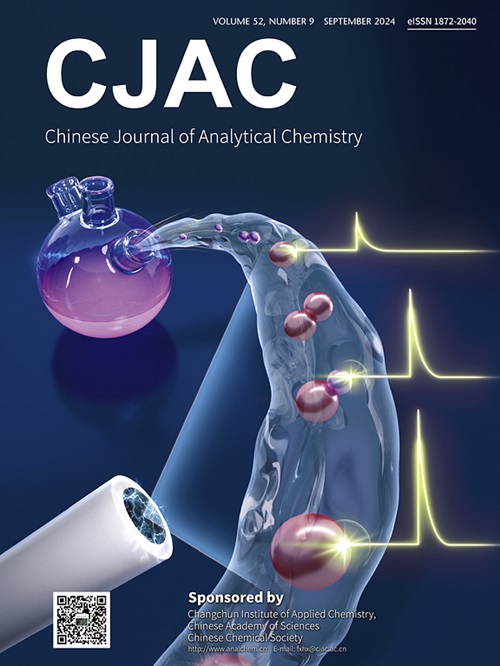研究了金属氧化物纳米流体对单管换热器性能的影响
IF 1.3
4区 化学
Q4 CHEMISTRY, ANALYTICAL
引用次数: 0
摘要
利用原子力显微镜(AFM)研究了三种不同浓度的纳米流体(Al2O3/H2O)制备氧化铝的两步法。AFM图像显示,纳米颗粒呈球形,平均直径和密度在45 ~ 55 nm之间。将聚丙烯酰胺(PAAM)作为氧化铝纳米颗粒的分散悬浮剂,在不同浓度(250、500、750、1000)ppm)蒸馏水中制备,然后在制备过程中测定每个样品的聚合物比例,用紫外-可见分光光度计在波长场(200-700)nm下测定10天的稳定性。通过分散剂和悬浮剂对样品氧化铝纳米粒子的分析,高压聚合物倾向于M25,得到给定浓度的最高浓度。随着PAAM浓度的增加,Al2O3纳米粒子在蒸馏水中的分散和稳定性得到改善,与(0.1%,0.05%)体积浓度相比,0.25%浓度的Al2O3纳米粒子随着时间的推移似乎分散更均匀和稳定,沉降较小,尽管Al2O3纳米粒子及其聚集体的尺寸增加,但吸光度峰下降了5.5%,而在先前浓度的吸光度峰下降了(14.2%和8.8%)。前两种浓度的Al2O3。PAAM聚合物的研究表明,由于聚合物的浓度较高,它们的流变性能不是牛顿的,导致粘度结果类似于非牛顿多糖。本文章由计算机程序翻译,如有差异,请以英文原文为准。

Studying the effect of using metal oxide nanofluids on the performance of a single-tube heat exchanger
The preparation of aluminum oxide from nanofluid (Al2O3/H2O) in three different concentrations using a two-step method was achieved by using an atomic force microscopy (AFM). The AFM images showed that the nanoparticles took on a spherical shape with a range of average diameters and density within the range of 45–55 nm.
Polyacrylamide (PAAM) was used as a dispersion and suspension agent for aluminum oxide nanoparticles in distilled water at various concentrations (250, 500, 750, 1000) ppm during preparation, followed by determination of the polymer ratio for each sample during preparation, stability assessment by ultraviolet-visible (UV-Vis) spectrophotometer in the wavelength field (200–700) nm for 10 days, and analysis of sample Alumina nanoparticles by dispersion and suspension agent by high-pressure polymers tended M25 resulting in the highest concentrations of the given concentration. By increasing the PAAM concentration, the dispersion and stability of Al2O3 nanoparticles in distilled water appear to be improved, and concentrations of 0.25% seemed to be more evenly dispersed and stable over time, with minor sedimentation compared to (0.1%, 0.05%) vol concentrations, where the absorbance peak decreased by 5.5% despite the increase in size of Al2O3 nanoparticles and their aggregations, while the absorbance peak in the previous concentrations decreased by (14.2% and 8.8%), respectively of the two previous concentrations of Al2O3.
The study of PAAM polymers demonstrated that their rheological properties were not Newtonian, owing to a higher concentration of the polymer, resulting in viscosity results that resembled non-Newtonian polysaccharides.
求助全文
通过发布文献求助,成功后即可免费获取论文全文。
去求助
来源期刊
CiteScore
3.60
自引率
25.00%
发文量
17223
审稿时长
35 days
期刊介绍:
Chinese Journal of Analytical Chemistry(CJAC) is an academic journal of analytical chemistry established in 1972 and sponsored by the Chinese Chemical Society and Changchun Institute of Applied Chemistry, Chinese Academy of Sciences. Its objectives are to report the original scientific research achievements and review the recent development of analytical chemistry in all areas. The journal sets up 5 columns including Research Papers, Research Notes, Experimental Technique and Instrument, Review and Progress and Summary Accounts. The journal published monthly in Chinese language. A detailed abstract, keywords and the titles of figures and tables are provided in English, except column of Summary Accounts. Prof. Wang Erkang, an outstanding analytical chemist, academician of Chinese Academy of Sciences & Third World Academy of Sciences, holds the post of the Editor-in-chief.

 求助内容:
求助内容: 应助结果提醒方式:
应助结果提醒方式:


